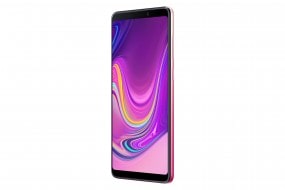
SAMSUNG Galaxy A User Manuals PDF


Overview of Samsung Galaxy A-series smartphones
Some SAMSUNG Galaxy A Owner Manuals PDF are above the page.
Samsung traditionally produces exactly three A-series devices, very similar in design and philosophy, but with different display diagonal and slightly different characteristics. The Koreans did not change in 2017 either. It tooks the whole family to the test: A3 with a display of 4.7 inches and a 13-megapixel camera, A5 with a 5.2-inch screen and a 16-megapixel camera and A7 with the same photo module, but already a 5.7-inch display.
A5 and A7 are built on the Exynos 7880 platform (eight cores with a peak frequency of 1.9 GHz) and carry 3 GB of RAM on board. A3 received the same processor, but running at 1.6 GHz, and two gigabytes of RAM.
On the test, devices arrived with Android 6.0.1 Marshmallow, covered with the Clean UI proprietary shell. Interestingly, not only TouchWiz (remember again, not clinking), but also Grace UX, demonstrated on Note 7, Samsung has covered all traces of a failing (but very good in everything except a combustible battery) gadget.
Philosophy, however, remained unchanged, the shell is perfectly familiar from last year’s models. Here there is Always-On Display, which displays the current time and notification icons on the screen in the standby mode, and a neat visual style, in which icons by default are worn in rounded frames (but this can be turned off), and their system fonts (nice) and good optimization, thanks to which the smartphone eats very little energy in standby mode.
Previously, it was the weak point of Samsung smartphones, as well as a rather large number of imposed applications. Now this is no problem.
